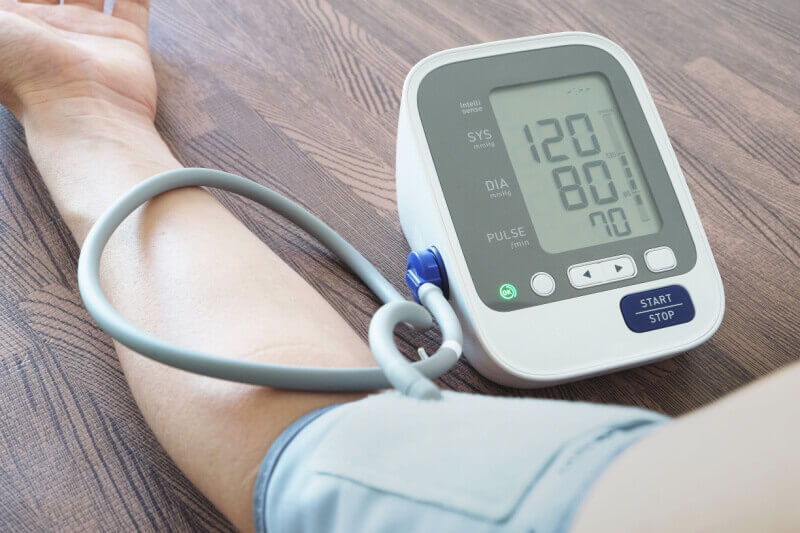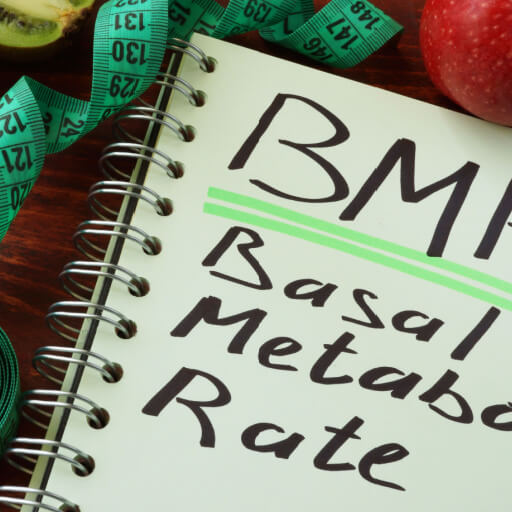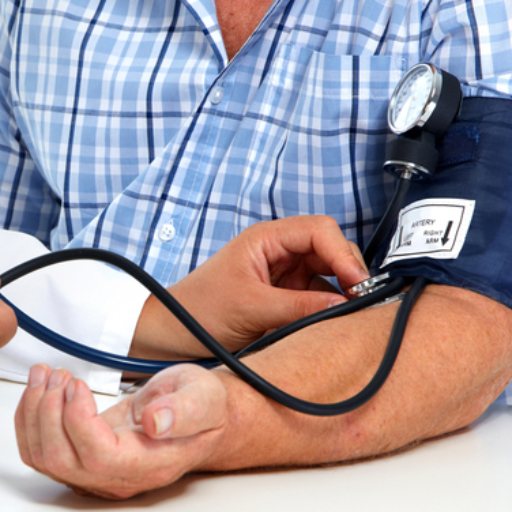Blood pressure is the force exerted by circulating blood against the walls of the arteries. While हाई ब्लड प्रेशर (hypertension) can increase the risk of heart disease, stroke, or kidney failure and low blood pressure (hypotension) can lead to dizziness or fainting.
इनके बारे में जानें:
- Instrument to measure blood pressure
- Factors to consider while selecting a monitor
- How to measure blood pressure?
- Measures to take during sudden blood pressure fluctuations
- A guide to choosing the right blood pressure measurement device
A healthy adult’s normal blood pressure level is 120 mmHg during systole (peak pressure in the arteries) and 80 mmHg during diastole (the resting phase of the cardiac cycle). Elevated blood pressure is when readings consistently range from 120-129 systolic and less than 80 mmHg diastolic, which is more likely for one to develop high blood pressure. The first stage of hypertension is when blood pressure exceeds 130-139 mmHg systolic and 80-89 mmHg diastolic, and the second stage starts when the blood pressure range is at 140/90 mmHg. Therefore, it is a good practice to measure your blood pressure levels regularly.
Instrument to measure blood pressure

Many people measure their blood pressure levels at home using an aneroid sphygmomanometer (manual) or digital monitor. In an aneroid monitor, you tighten the cuff around your upper arm and squeeze a rubber bulb to inflate it by hand. You can read the measurements on a gauge by looking at a pointer on the dial filled with mercury. The pressure at which the practitioner hears the pulse is systolic pressure. When the cuff is gradually deflated, the blood flow sound stops and the pressure is diastolic.
However, this complex device has some drawbacks:
- There are chances of observer error while reading the blood pressure from the dial.
- Small movements can cause inaccurate readings.
- The device may be hard to use if there is no metal ring to tighten the cuff.
- The rubber bulb that inflates may be hard to squeeze.

The digital monitor is a reliable health tool for measuring blood pressure. To get started, you can tap on the start button. Remain still as the machine begins to measure. The cuff will inflate and gradually deflate so the machine can take the measurement. When the reading is complete, the blood pressure levels will display on the digital panel.
Factors to consider while selecting a monitor
Keep in mind the following features when you select a monitor:
- It is vital to know the right cuff size based on the size of your arm to get the correct blood pressure reading. A doctor, nurse, or pharmacist can assist you in making the right choice.
- The numbers displayed on the monitor should be easy to read.
- If you are checking your blood pressure manually, it is important that you hear the sound of your heartbeat through the stethoscope.
How to measure blood pressure?
Here are the steps to measure your blood pressure:
- Sit in a comfortable position with your back supported and legs and ankles uncrossed.
- Rest for around 3 to 5 minutes.
- Raise your left arm to the level of your heart and keep it on a desk to stay still.
- Wrap the cuff around the upper part of your bare arm, placing it so that the bottom edge is 1 inch above the crease of your elbow. Keep it snug to get an accurate reading.
Measures to take during sudden blood pressure fluctuations
If your blood pressure drops suddenly, lie down immediately and raise your legs above the level of the heart. Increase your fluid intake to prevent dehydration. You can use more salt instead of limiting sodium intake after consulting your healthcare provider.
If your blood pressure rises suddenly, sit down and take a few breaths. Immediately take your blood pressure medication. A cup of chamomile or hibiscus tea can also help you feel calm.
A guide to choosing the right blood pressure measurement device
Here are some factors that you should keep in mind while choosing the right blood pressure device:
- विशेषताएं: There are both analog and digital blood pressure measurement devices. Some devices also transfer the blood pressure details to your computer and offer insightful details. Therefore, before you buy this, consider all the factors, such as the display screen and irregular heartbeat detection.
- Price and reviews: Blood pressure monitors are available at varied prices. Users also leave reviews about products, based on which you can decide.
Self-monitoring can help you diagnose हाई ब्लड प्रेशर at an early stage. In the beginning, measure your blood pressure at least twice a day – before eating or taking any medications and once in the evening. Don’t measure your blood pressure right after you wake up. Take 2-3 readings every time you measure to ensure you get the same results. Record your readings to keep track of your blood pressure levels. Contact your healthcare provider if you have any unusual increases in your blood pressure. You can also check your blood pressure levels using our Online Blood Pressure Calculator.
Stay tuned to the Activ Living Community. Keep up to date with the latest health tips and trends through expert videos, podcasts, articles, and much more in पोषण, फिटनेस, सचेतन, और लाइफस्टाइल से जुड़ी बीमारियां like Asthma, Blood Pressure, Cholesterol, and Diabetes. Activ Living ke saath sahi sehat ki shuruaat ABHIkaro.
You may also be interested in the following blogs:
- The Great Mango Debate: Is This Fruit Safe For People With Diabetes?
- Is Papaya Good For Diabetes? Discover 3 Surprising Benefits For Blood Sugar Management
Popular Searches
Natural Beta blockers | How to cure depression | Summer activities for kids | High bp symptoms | HIIT workout | How to increase platelet count | Dash diet | सिस्टोलिक और डायस्टोलिक ब्लड प्रेशर | High blood sugar symptoms | Tabata workout | Push ups for beginners | Benefits of zumba | How to prevent breast cancer | Homeopathic medicine for asthma | Fruits to avoid in pcos | Neck pain relief exercises |Yoga for heart | Healthy soup recipes | Anti aging foods | Vitamin rich foods





 1800-270-7000
1800-270-7000








